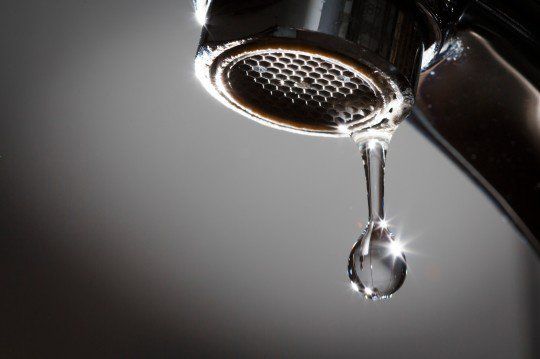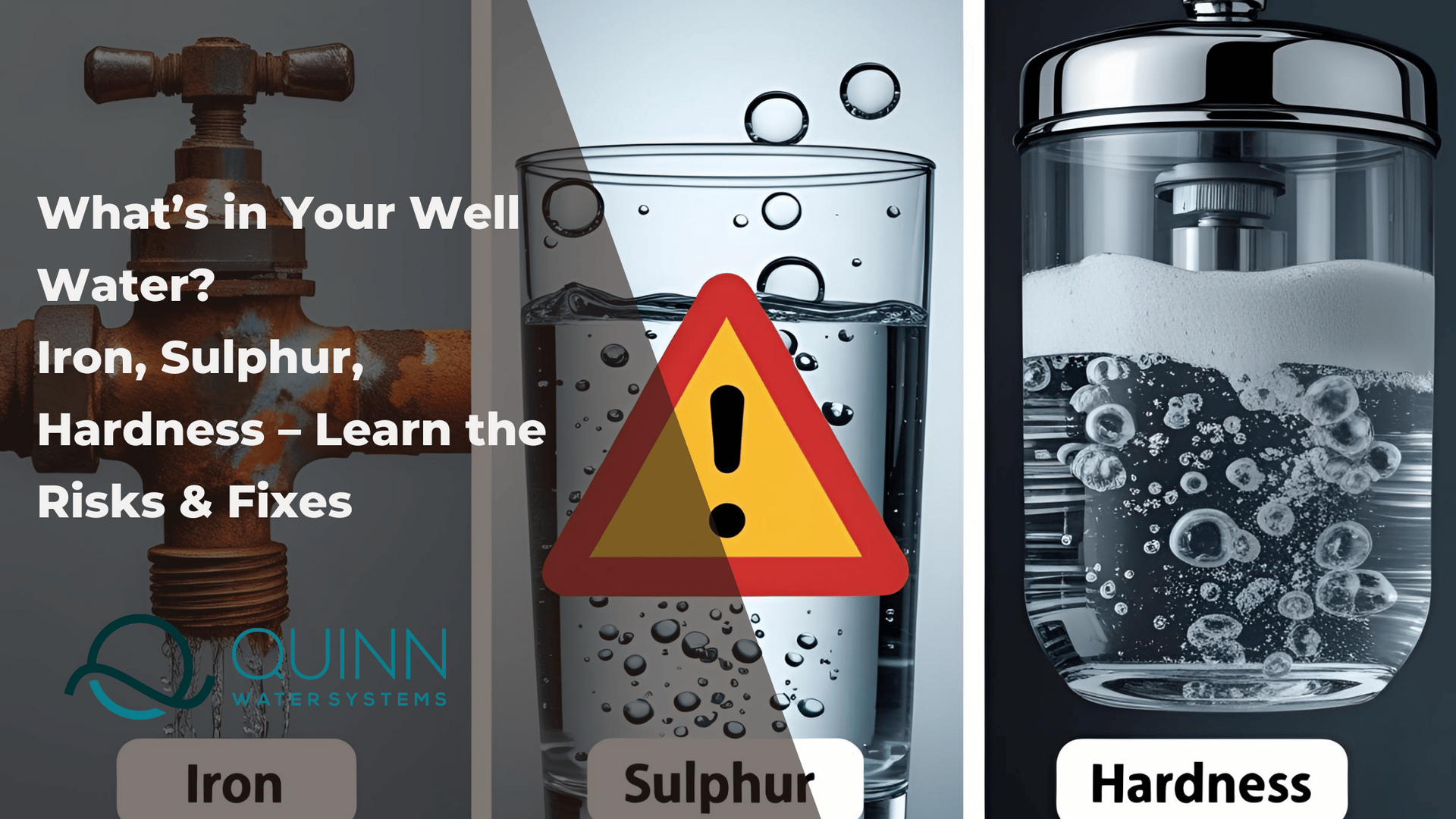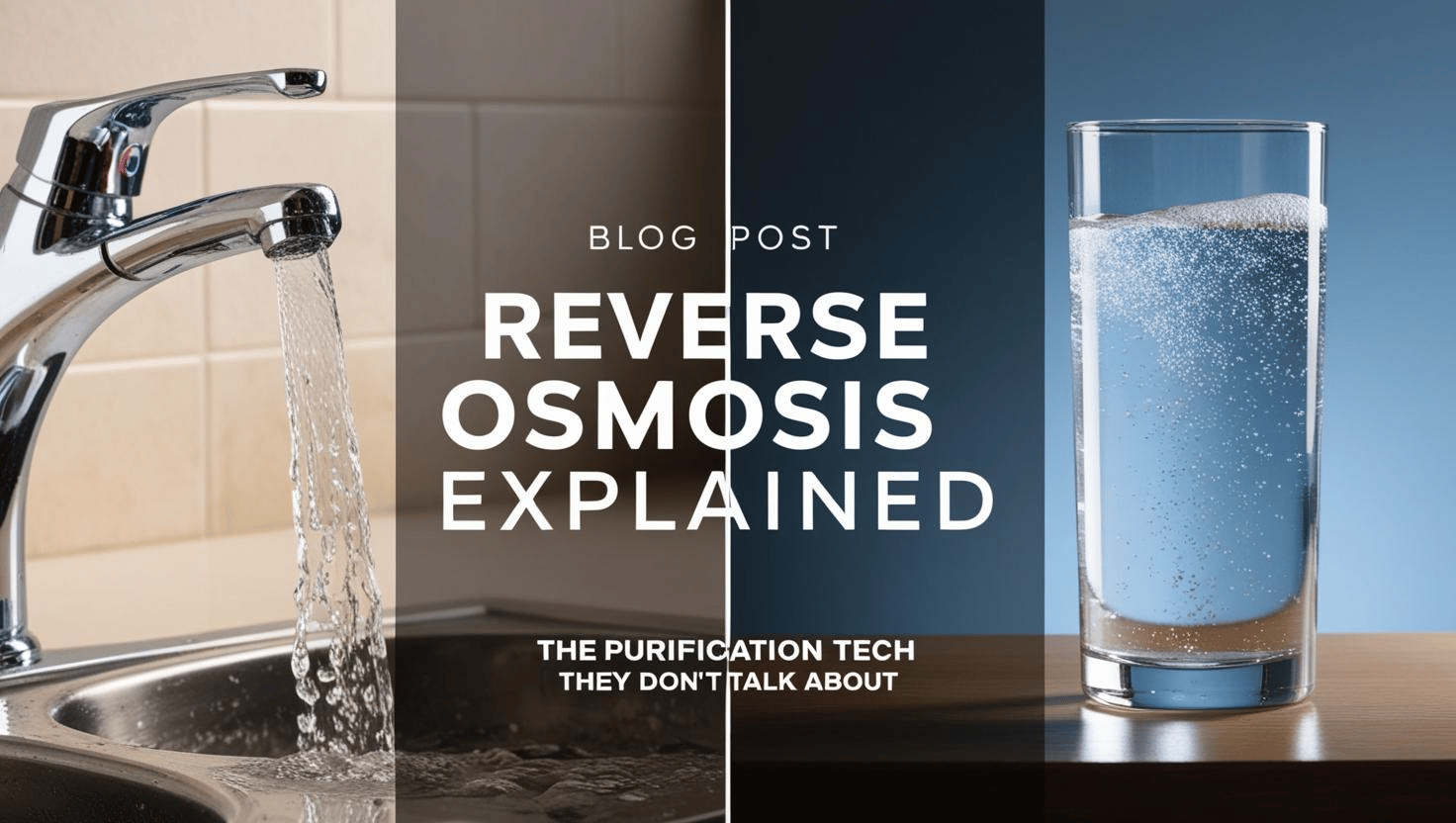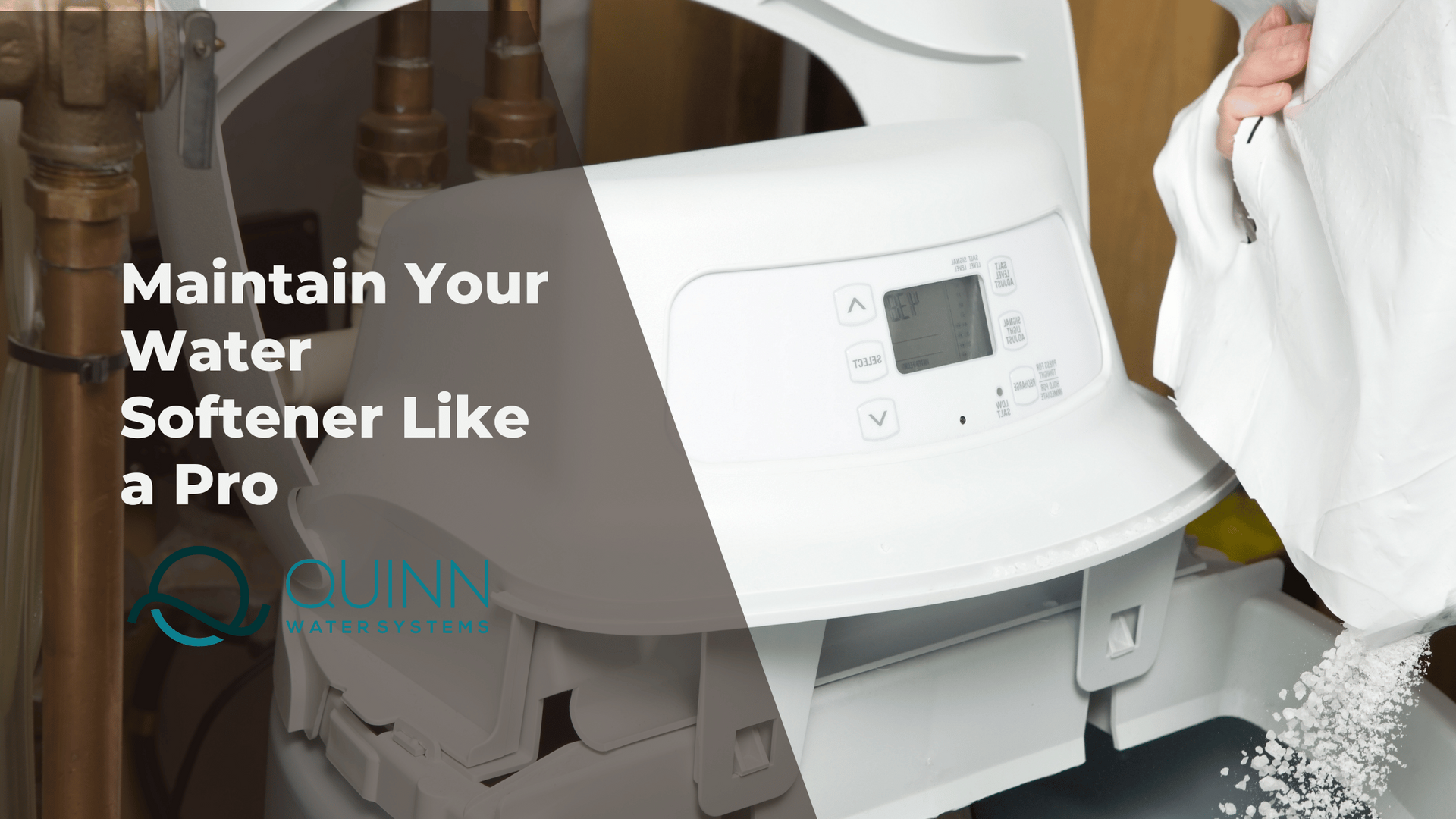Iron in Your Well Water: What You Need to Know About Iron Filters!
Have you ever noticed that subtle metallic taste in your water or those frustrating reddish stains on your sinks and laundry? Well, chances are you're dealing with a common culprit: iron.
Imagine this scenario: you rise early one morning, eagerly anticipating a crisp, refreshing gulp of water, only to be met with a telltale tang of metal. Not quite the eye-opener you had in mind, huh? Believe me, I've been there. Residing in Ontario, where well water reigns supreme, I've encountered my fair share of skirmishes with iron-induced water woes.
What is IRON and How Does Iron Get Into Your Well Water?
Iron is one of the most popular contaminants in well water that just loves to make its presence known. From muddy-coloured glasses of drinking water to bright orange streaks in toilets and bathtubs, iron leaves a trail of stains, discolouration, and foul tastes in its wake. It's like the unwelcome guest that just won't take the hint to leave the party!
So, where does this pesky iron come from, anyway? Well, it's like a detective story unfolding right in our own backyard. As water passes through soil layers or encounters iron pipes in our plumbing systems, it picks up traces of iron along the way, turning our pristine well water into a battleground against the elements. Aged iron pipes and corroded fixtures will leave brown-coloured flecks in your water and orange stains on your drains. Iron casings within your well will begin to rust over time. When iron is exposed to oxygen and water, it begins to oxidize and deteriorate. This is because prolonged exposure to the elements causes iron to break down and convert into rust. Remedying this situation might involve replacing the pipes running from your well.
Picture this: soluble iron may not be immediately visible, but it's like that sneaky stain that shows up after you've washed your favourite shirt. Oxidized iron, on the other hand, comes out swinging, appearing red or rusty right from the tap, like a warning sign that says, "Beware: Iron Ahead!"
How to Detect Iron in Your Well?
If you suspect an iron problem in your water supply, well water testing for iron becomes crucial. Determining the source of iron contamination is key, whether it's from the corrosion of iron or steel pipes or other components of the plumbing system, particularly where the water's acidity, measured as pH, falls below 6.5.
A comprehensive laboratory analysis of your water is essential to gauge the extent of the iron problem and explore potential treatment solutions. This analysis typically includes tests for iron concentration, the presence of iron bacteria, pH levels, alkalinity, and water hardness. To initiate this process, obtain a water sample kit from a certified laboratory and meticulously follow their instructions for collecting the water sample. Remember to collect the sample as close to the well as possible for accurate results.
For those receiving water from a public water system, it's important to communicate any iron-related issues promptly. Contacting a utility official can help determine whether the red water you're experiencing stems from the public system or originates from your home's plumbing or piping. Understanding the source of the problem is crucial for implementing targeted solutions and ensuring the quality of your water supply.
Can Iron Affect your Health?
Iron itself is an essential mineral for the human body, playing a crucial role in various physiological functions such as oxygen transport, energy production, and DNA synthesis. In appropriate amounts, iron is necessary for maintaining overall health and well-being.
However, excessive intake of iron, particularly from drinking water, can potentially pose health risks. The primary concern arises from the presence of iron bacteria in water sources, which can proliferate and lead to elevated levels of iron in drinking water. While iron bacteria are generally not harmful to health, their presence can contribute to aesthetic issues such as unpleasant taste, odour, and discolouration of water.
Additionally, high levels of iron in drinking water may cause gastrointestinal discomfort, including nausea, vomiting, and diarrhea, especially in sensitive individuals. Long-term exposure to elevated iron levels in water may also lead to the formation of iron deposits in pipes and plumbing fixtures, potentially causing corrosion and deterioration of the water distribution system.
3 Types of IRON and How to Remove Them
Iron filters work by employing various mechanisms to remove iron from water, depending on the type of iron present and the specific filtration system used. Learn more about our WELL WATER TREATMENT
| Symptoms | Iron Form | How to Treat | Consideration |
|---|---|---|---|
| Tap water is first clear and colourless. After standing, reddish brown particles appear and settle to bottom of glass. | Dissolved ferrous iron | Water softener | Hardness must be calculated and increased sodium concentration should be checked if users(s) on restricted sodium diet. System must be airtight. - Use of chlorine liquid or pellets. Requires frequent monitoring and proper water pressure. May require lengthy contact time. - Dissolved oxygen, alkalinity, organic matter, chlorination, polyphosphate, and temperature limitations |
| Tap water appears rusty or has a red or yellow color. After standing, particles settle to bottom. | Insoluble red water ferric iron | Sediment filter | A sediment filter alone will not solve your stained toilets and metallic tasting water if your well has ferrous iron in addition to the ferric iron. |
| Water containing bacterial iron is often associated with slime or biofilm buildup in plumbing fixtures and pipes. | Bacterial iron | - Shock chlorination; consider following with continuous chlorination. - Dissolved oxygen, alkalinity, organic matter, chlorination, polyphosphate, and temperature limitations | - Chlorine products must be suitable for drinking water. Method requires long contact time for adequate treatment. |
| Water containing organic iron is usually yellow or brown color, but may be colorless. Tannins stain water a tea color. | Organic iron and tannins | - Water softener - Manganese Greensand/Filtration - Ozonation | First, treat for organics (activated carbon). Check for corrosive properties. System must be airtight. - First, treat for organics. Maintain adequate pressure. |
Ask Us About Iron Well Water Treatment
Blog Posts
Share this blog
Blog Posts















